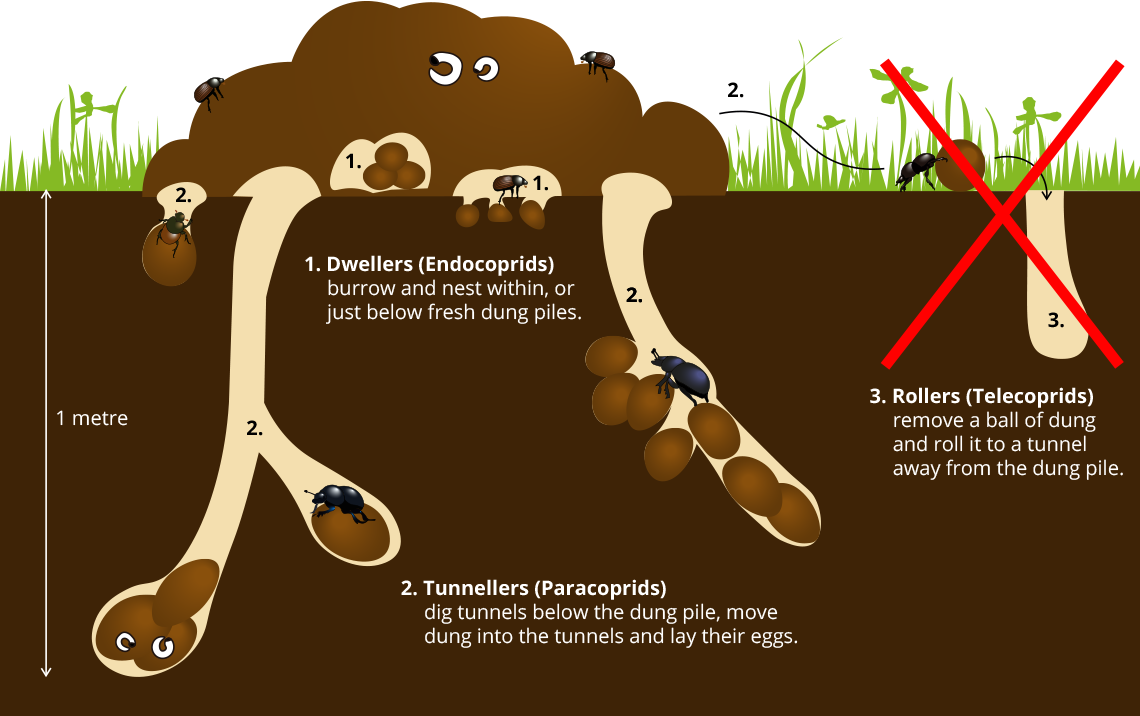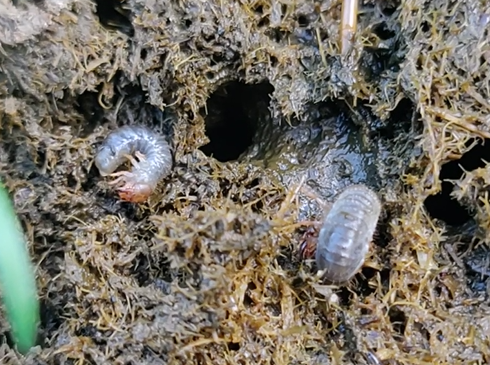Dung Beetle Life Cycle

Dung beetles have 4 distinct stages to their lifecycle:
- Egg
- Larvae
- Pupae
- Adult
Dung beetle eggs are usually small and laid in individually or in batches either within the dung pat or a dung ball (brood ball) created by the adult beetle in a chamber. Each female lays anything from 10 to a few thousand eggs, though the lower numbers are more common.
The eggs hatch after a few days into C-shaped larvae (grubs), these grubs don't resemble the adult beetle. They feed on the dung ball while they grow and develop, molting and increasing in size.

After 1-4 weeks the larvae pupates, this is where the transition from larvae to adult happens and may last a few weeks or months. Following pupation the adult dung beetle emerges.
Dung beetle emergences are triggered by a number of environmental factors and dung beetles can delay their emergence to suit conditions. Some species will have 2 emergences in a year even though adults from the previous year are still present. Some are seasonal and some are active all year round.
Finally, we don't really know the duration of the lifecycle, it could be less than 6 months or it could be a year.
